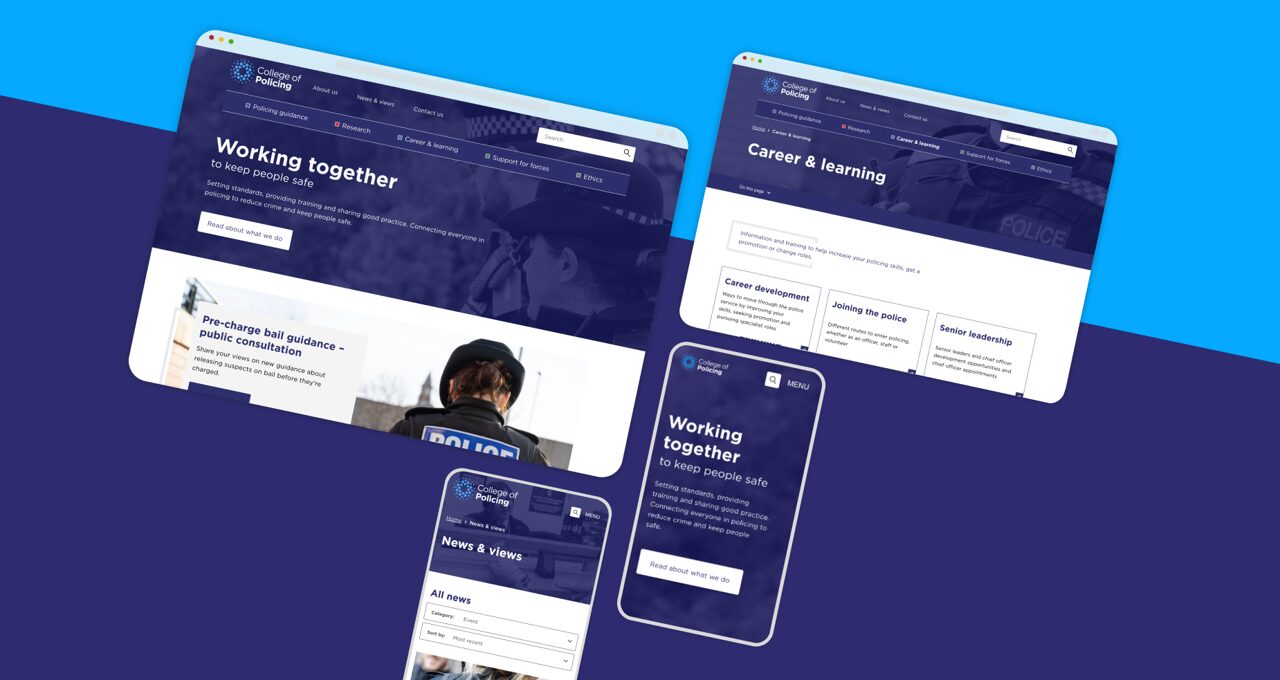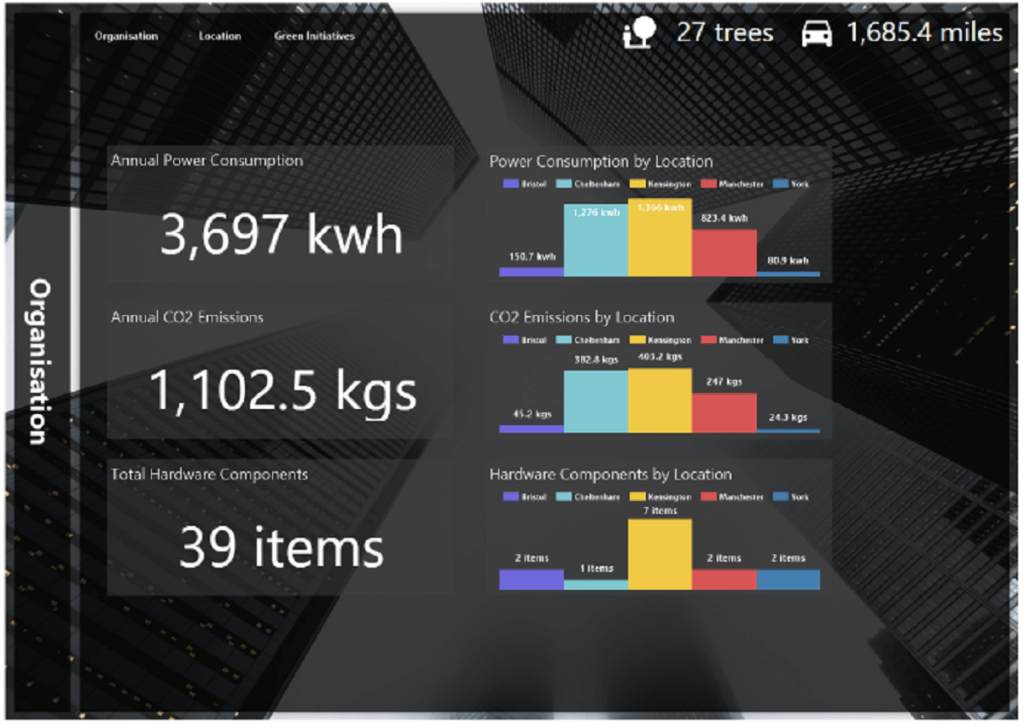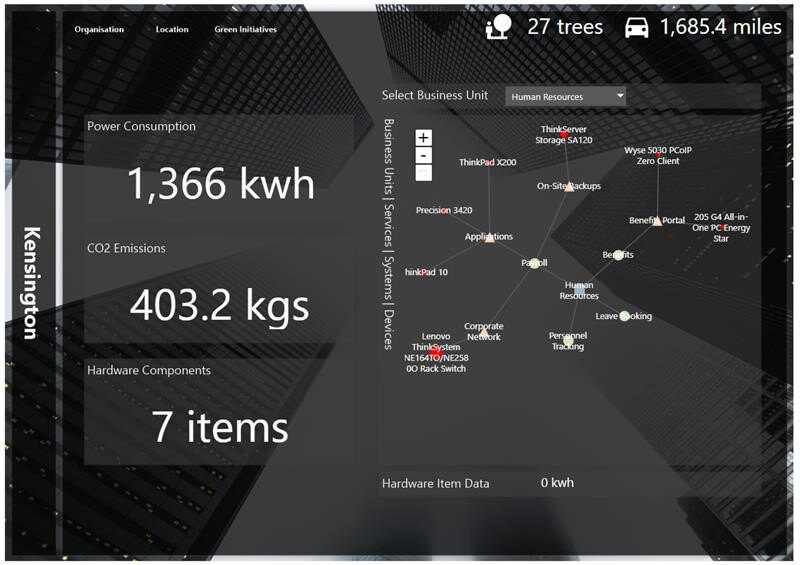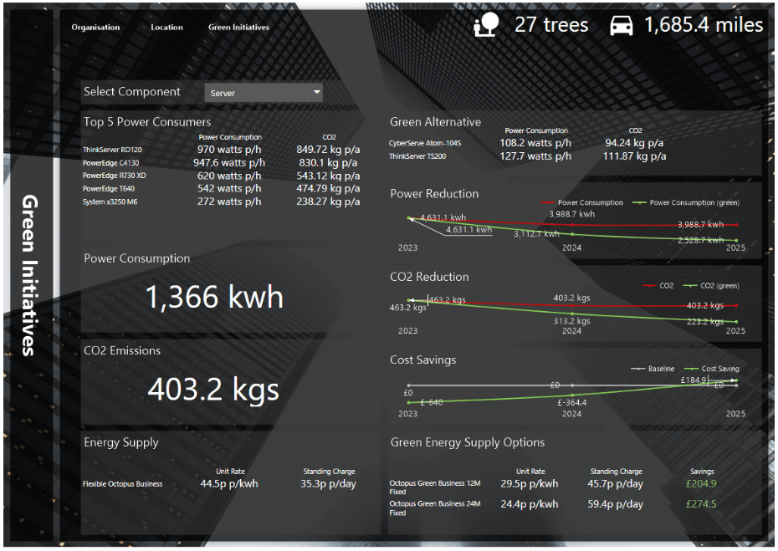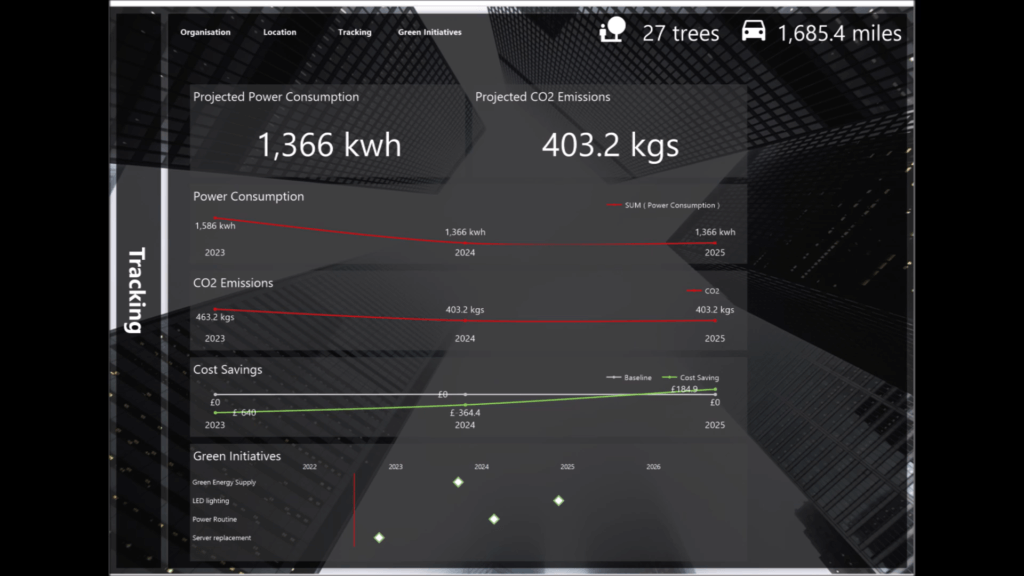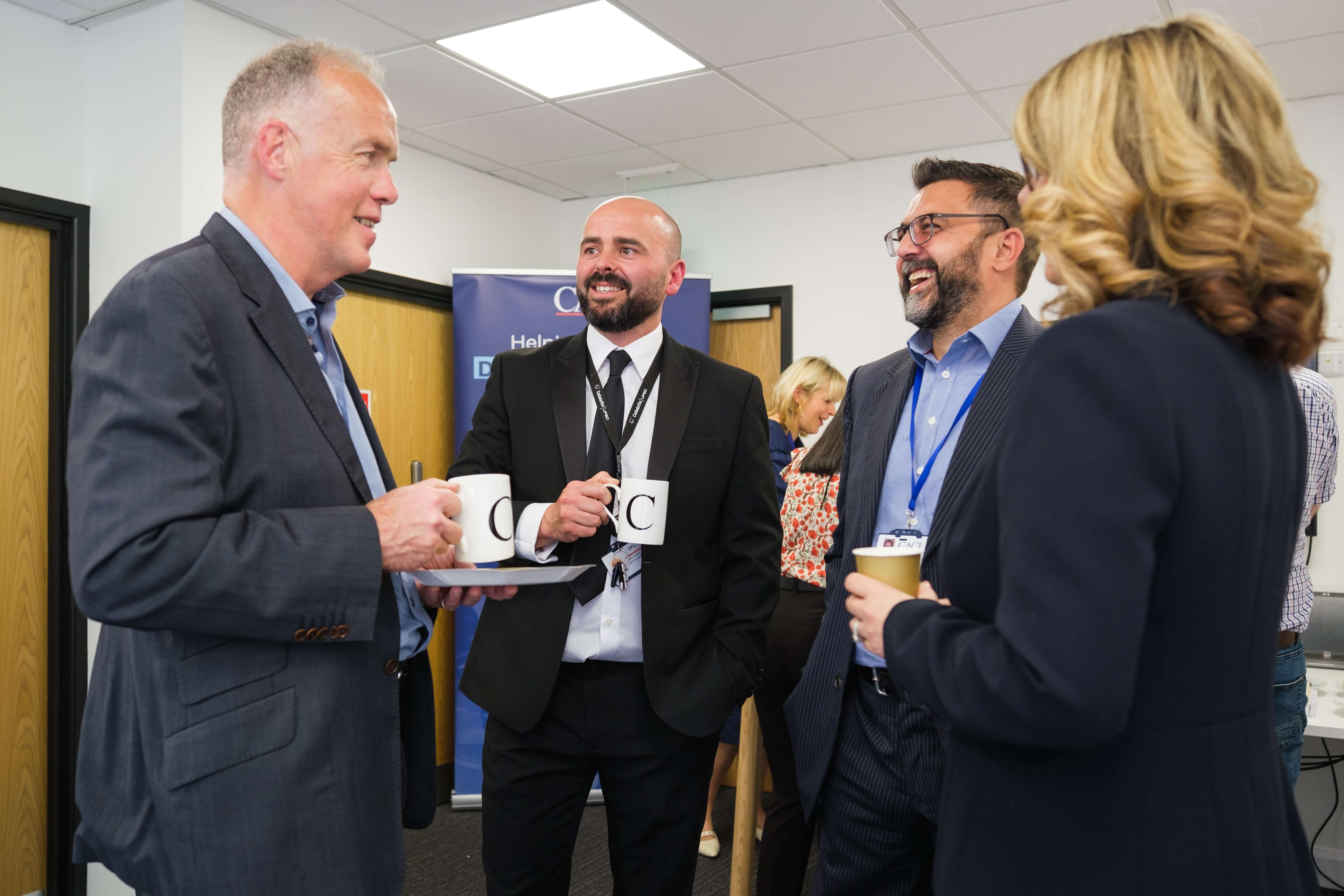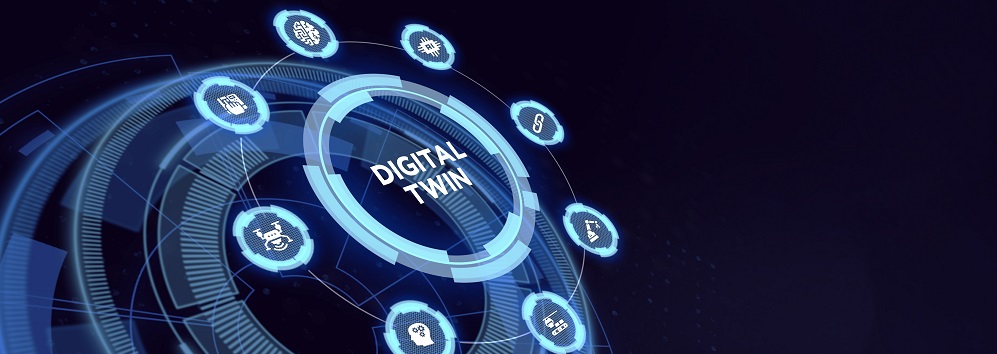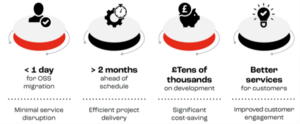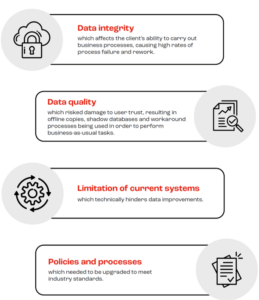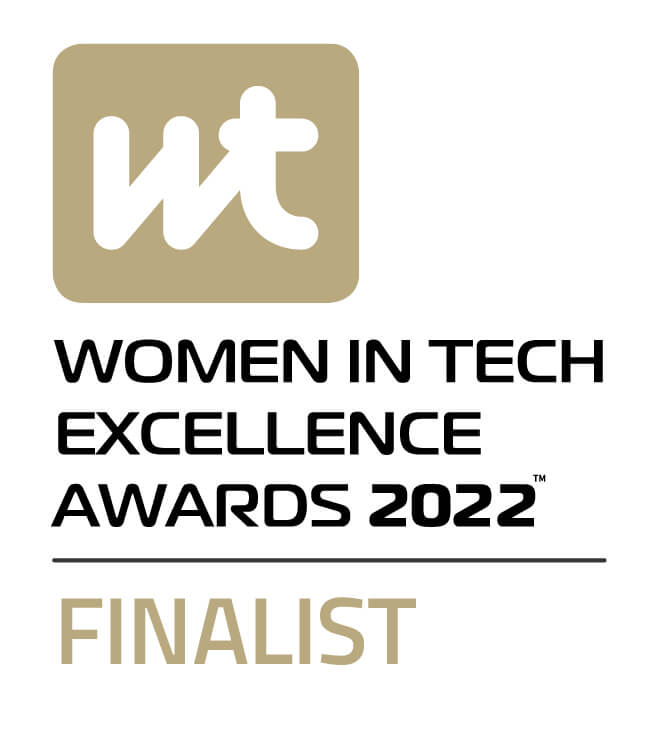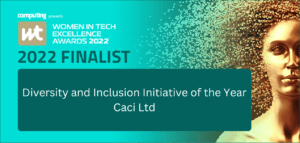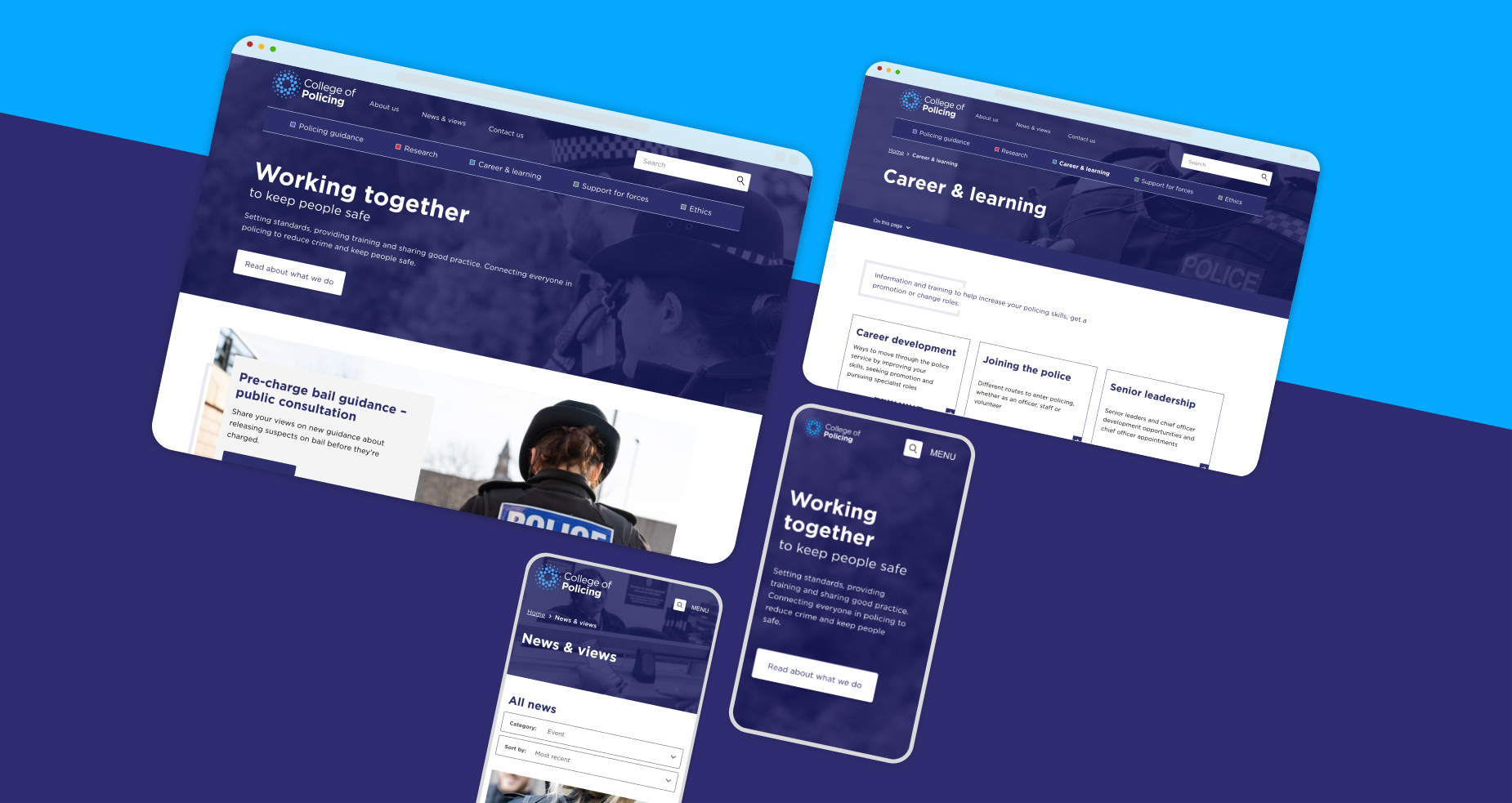
The College of Policing is the professional body serving the police in England and Wales. Their mission is to equip everyone who works in the police service with the professional knowledge and skills to prevent crime, protect the public, and gain their trust. The College had a digital estate of micro-sites with inconsistent brand identity and design that required a revised modernised look and feel to improve user satisfaction and become a central source of information.
CACI were selected to consolidate their websites into a single, user-friendly next-generation Drupal platform, transform the user experience and content architecture, and upgrade the branding and interface design. Our goal was to help the College continue being a valued centre of learning excellence and cope with the demands of modern policing. It was initially launched as a public-facing beta website in summer 2020, consolidating many of the existing websites in February 2021.
The challenge
The College has a broad and diverse user base, with users from a wide range of backgrounds, working across different police forces at various levels of rank and experience. Diversity and inclusion are paramount concerns for the College, as awareness is growing about the importance of diversity for effective policing. For these reasons, they needed a CMS platform that was inclusive, accessible and highly usable.
Given this, the objectives were as follows:
- Consolidate multiple websites and pages into a single, data-driven, accessible CMS platform with excellent user experience and security
- Craft a new content strategy for the website with clear governance for the future
- Pass Home Office-led service assessments, with a particular need to work for (and with) diverse user groups
Working together
To achieve all these aims, the College needs an accessible, user-friendly online platform that is easy for their internal content teams to manage and keep up-to-date with timely information and learning materials. They need a robust user experience strategy based on research and testing to ensure they can fulfil the diverse needs of their user base, keeping in mind the strict information security and compliance requirements of the CMS and hosting infrastructure. However, their previous websites were not equipped to meet these challenges.
As the College grew and evolved over the years, their digital estate had expanded. Different departments had worked in silos, adding their own sections and pages. As a result, there were many disparate websites and thousands of pages with inconsistent visual styles, differing content and search functions, and large amounts of legacy content which was no longer relevant to the College’s present-day operations.
This project called for a truly collaborative approach. CACI would not only design and build the new platform, but also upskill many departments in the College of Policing, from the managers to the content and marketing teams. Our goal was to help them to build a powerful internal culture of user-centred thinking and realise the full potential of their new platform.
We formed a cross-functional team, including a Delivery Manager (certified ScrumMaster); Service, Interaction/UI and Content Strategists and Designers; Drupal Developers, DevOps engineers and Quality Assurance Testers. Our team worked closely throughout with Product Owners, Subject Matter Experts (SMEs), and Content Designers from the internal College team.
Together, we ran the project applying Agile methodology. Stand-ups, show-and-tells, planning, and retrospectives were run at a cadence that suited both teams, across fortnightly sprints.
Crafting a new UX and UI
The College had never employed a specifically user-centred design approach before, so we incorporated a strong focus on user needs.
We began by collaborating with the College to create a detailed user research guide. This defined research goals, methods, recruitment protocols, and scripts for contextual research. Then, we conducted approximately 50 depth-interviews over multiple rounds with diverse stakeholders and user groups.
The research found that many users did not fully understand the role of the College or what it could offer to them as individuals or part of the police force. Users also stated that the College’s technology was outdated, and the platform was not responsive enough to keep up with the fast-paced word of modern policing.
It was clear that the College needed to improve communication. This called for new user journeys and information architecture, bringing together the important information from the different websites in an intuitive, user-friendly way.
Taking an iterative approach, we developed the first version of the website, usability testing the prototypes and information architecture to ensure both were robust and met the users’ needs.
Accessibility audits were done at each stage of the process; this meant there would be fewer issues to resolve further down the development pipeline. Users with assistive needs were included in research and testing from the very beginning, embedding accessibility throughout the project.
It was also important to socialise the insights from our iterative research with the College’s stakeholders. We provided UX training and coaching, embedding UX into the College team’s Agile workflow by designing ‘in the open’. We advocated best practise, and adjusted coaching for different stakeholder seniority levels. For example, UX and accessibility material was socialised differently for project level subject matter experts (SMEs) than for cross-organisation-level budget owners, who are less involved in the day-to-day work.
Alongside designing the user experience, we also contributed to refreshing the branding and UI design. Transparency and ease of use was key; the College is a publicly available resource which is viewed by journalists and the public as well as police, and they need to be fully transparent in their practises. The new website is designed to have a modern and positive tone both in the choice of content and in the photography and visuals, with an emphasis on diversity and inclusion.
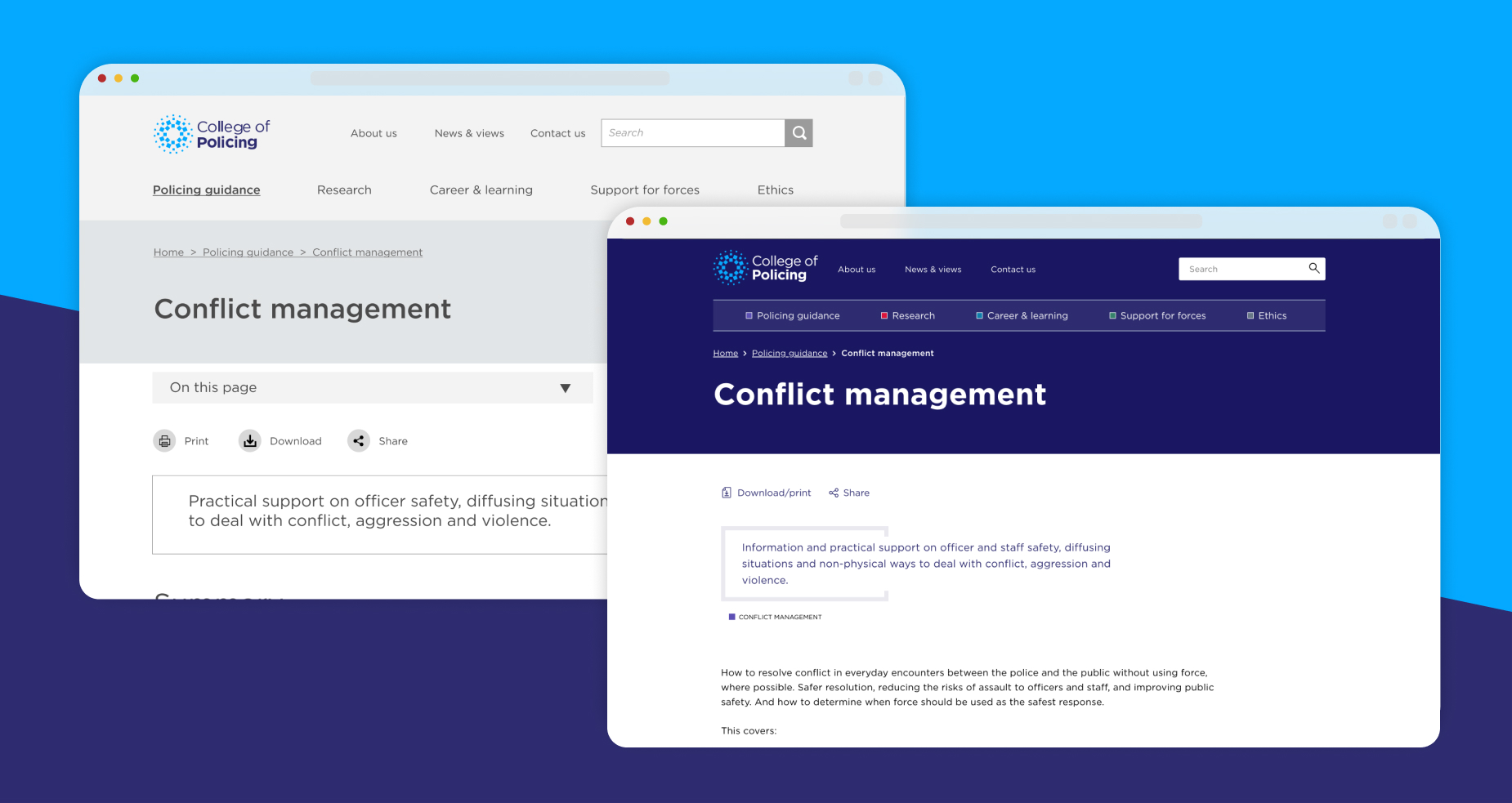
Content strategy and architecture
This was a major content strategy and content design project; we ultimately restructured millions of words of content relating to police best practise.
Our research had indicated that users were struggling with inconsistent content structures across the website. There was also no obvious indication of when the content had last been updated, which was a major pain point for users who needed the latest policing guidance and best practise.
Working closely with our partner Scroll and the College’s SMEs, we crafted a content strategy informed by a new tone of voice. Together, we aimed to engage and position the College in the right way to a broad audience.
Our content strategy had clear guiding principles that outlined:
- How content is created: making sure all content is validated against user needs
- How content is reviewed: the roles and workflows for content reviews
- How content is governed: managing the lifecycle of content and how it’s reviewed
- How content is decommissioned: is the content still relevant, or is it no longer needed?
Because policing evolves so quickly, it was vital that the new content strategy provided clear governance for the future. For example, the new site needed to stay up-to-date with the latest COVID guidance during a time when laws and regulations were changing weekly, necessitating frequent updates.
Our developers, UX team and designers worked together to design the content architecture. This involved identifying the different types of content needed on the site, how they related to each other, and how each might be categorised and structured.
We created new, clear page hierarchies, along with page templates for each content type. Publication dates were placed at the top of the page where they could be easily seen. Usability testing participants found the new pages less cluttered, with consistent visual patterns that meant they could scan and absorb information quickly – crucial for busy police officers.
Next, we crafted a roadmap for migrating and integrating content from the various old websites into the new consolidated platform. We provided explanatory communications (content design principles) for subject matter experts (SMEs) to advocate best practice and collaborated with them to identify user groups and score the existing content’s quality.
Collaborating with the SMEs throughout, we:
- Used roadmaps and user-centred content considerations to prioritise what would be migrated and when.
- Analysed and migrated content against defined and validated user needs.
- Created and adapted new content, applying College brand guidelines and tone of voice.
- Designed, developed, and built a pattern library containing defined content types to keep style and tone consistent (to be used both retroactively and for creating new content).
- Developed content types to cater for new requirements and formats, such as online courses.
Building the new site with Drupal
As a tech-agnostic agency, we considered different CMS solutions to determine what would work best for the College. Drupal stood out as a platform that would allow them to manage their content in a scalable, secure, and performant manner.
In late 2019, we selected a version of Drupal 8 combined with Layout Builder called Acquia Lightning and used that to develop the initial solution, taking our functional cues from the in-depth UX work and our theme cues from the design phase of the project. Drupal offered significant content moderation and scheduled publishing improvements, making life much simpler for the College’s team of content creators. All pages on the site have been improved in this respect, from news and articles to the careers page. We’ve also implemented new page types which empower them to deliver information in different formats, such as podcasts.
From the redesigned content architecture, we built an initial beta MVP version of the website that the College were able to review and give feedback on. From this, we iterated the final website. The site that was formally launched in “beta” and ran in parallel with their old website for several weeks, as the old content was migrated across by the content creators.
After launch, we organised independent security testing to validate and sign-off on the secure architecture of the CMS and hosting setup. An additional independent accessibility audit revealed a few minor issues; all but one of these (an error in Google Maps outside of our control!) was fixed within a week of that report. This demonstrates the value of embedding accessibility throughout the entire project, rather than leaving it as a tick-box exercise at the end: by taking this approach, we ensured there were no non-conformities to be resolved before launch.
As part of our work with the College and other Government clients, we’ve developed a very deep understanding of the power and limitations of the mandated hosting service provided through GOV.UK PaaS.
With Drupal 8 approaching EOL in November 2021, we migrated the site to Drupal 9 in September of that year, setting up the College for an eventual smooth transition to Drupal 10 in mid-2023 (as well as future iterations of Drupal).
A powerful search solution
Throughout this project, our primary aim was always to help the College realise their goal of becoming the go-to resource for information, learning and research in policing. To achieve this, they needed a powerful search function with multi-site functionality, enabling users to navigate through huge amounts of information (from both internal and external web pages, including multiple policing websites) with ease.
This was beyond the capabilities of the native Drupal search, so we replaced it with an Algolia index to drive an extended search solution. By building middleware to parse and enrich data sources, we’re able to index several types of content in any format for many external sites. We also incorporated manual data feeds from external CSV/JSON files.
Using Algolia InstantSearch, the search page now aggregates all data from within the College website, plus external sources including many British police force websites.
It also pulls from the National Police Library, which houses many thousands of research papers and information resources on crime and policing. Users can access all these resources from one simple search page, making the College a central hub where people can go for information and research.
The new search function was iteratively developed and validated through usability testing at every stage. The engine brings up to 200x faster results, more accurate word-matches, better filtering, synonyms, and featured results that can be controlled by the admin-level editors. It is designed so users can filter content by source, theme, type, or recency, navigating through huge amounts of information quickly and efficiently.
As the College continues to grow, evolve, and expand in its aspirations, the website and search function will continue to evolve with it.
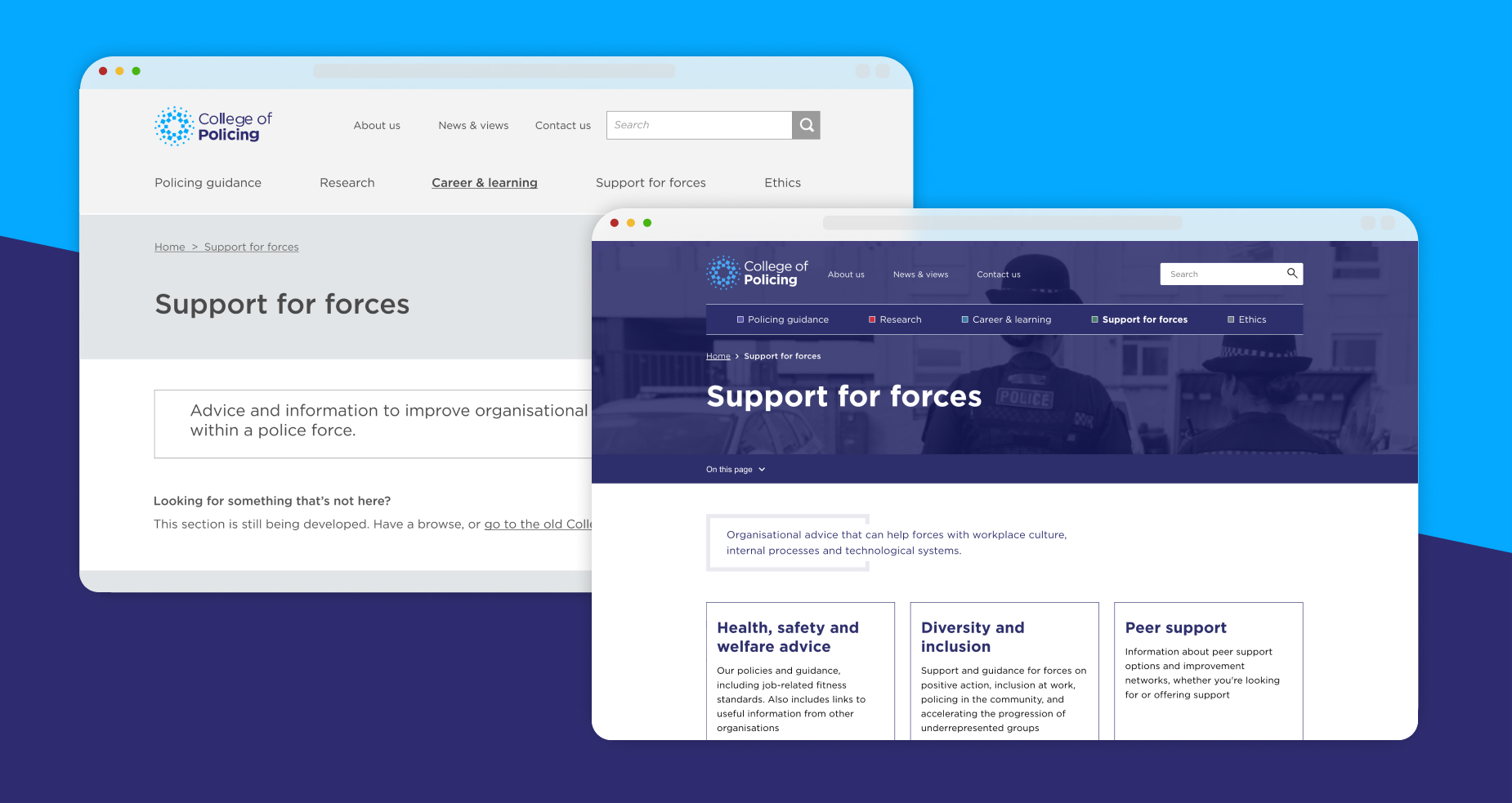
A new approach to SEO
Because there was an overlap between new and old websites, and they were live at the same time, this was an unprecedented project for us in terms of SEO. The old websites were always intended to be merged after a few months, so we needed to make sure the migration would go smoothly.
To track performance of the new beta site, we set up a new Google Search Console account and implemented the relevant analytics settings.
When the new site was fully launched, we coordinated this with the Search Console to ensure the College would not lose the SEO credibility they had built up over the years. Because the URL had changed, we put it on Google Analytics as a legacy. Our SEO specialists and developers worked together on cookie configuration, ensuring the cookie banner was GDPR compliant.
We have since worked this way with other clients who had an old and new site running in parallel as part of a website consolidation project, making the College a landmark SEO project for us.
Results and ongoing work
This project demonstrates how technology can be used for genuine digital transformation, changing what our clients do and how they do it. Our work has touched every single department of the College of Policing in some way, from user journeys and content strategy, to DevOps support, to upskilling their internal teams and inspiring cultural change.
In summer 2020, the College’s new website was initially launched as a public-facing beta website. The new beta was evaluated against the WCAG 2.1 AA, achieving a score of 96% on the first pass, with the minor remaining non-conformities resolved within a week. This was a huge leap forward for a website which previously had no UX or accessibility strategy in place.
The new platform passed a Home Office service assessment first time. Feedback said it was “great to see the Cyber-Duck and College’s cross-functional team positively tackling such a vast organisational/cultural challenge”, particularly around including users with accessibility needs from the outset.
The beta website eventually superseded the old College website in February 2021. We continue to integrate parts of the old platform, iterate and make new releases, with a usual cadence of 2 weeks, helping the College to deliver a better experience for the policing community.
As well as new functionality and the inevitable bug fixes, every release includes an update to Drupal core and contributed modules, ensuring we have the latest stable code base in operation and the site remains secure. When Drupal announces security issues, we triage them against our knowledge of how the College’s site is used and issue a hotfix when required. Perhaps most rewarding for us on this project is the bond of trust between Cyber-Duck and the College, which allows us to provide them with real value.
Key Stats
- 100 – Google Lighthouse score for performance, accessibility and SEO at launch
- 96% – Independent accessibility audit score against WCAG 2.1 AA
Feedback from the College said:
“CACI’s expertise and advise was invaluable to transform multiple services into a single website solution for the College of Policing. Being always on hand to offer support together with their understanding of the very specific requirements of Policing was very impressive. They brought us on a journey with a user centred and design process that focused on that important aspect of getting accessibility right. We appreciated the diversity of the team and the experiences and perspectives they brought to help solve complex challenges. We have great feedback from our users, we believe it only gets better from here.”
Or for more information on how CACI can support you with your digital transformation, please visit our Policing page, or get in touch and one of our experts will happily arrange a time to talk.


